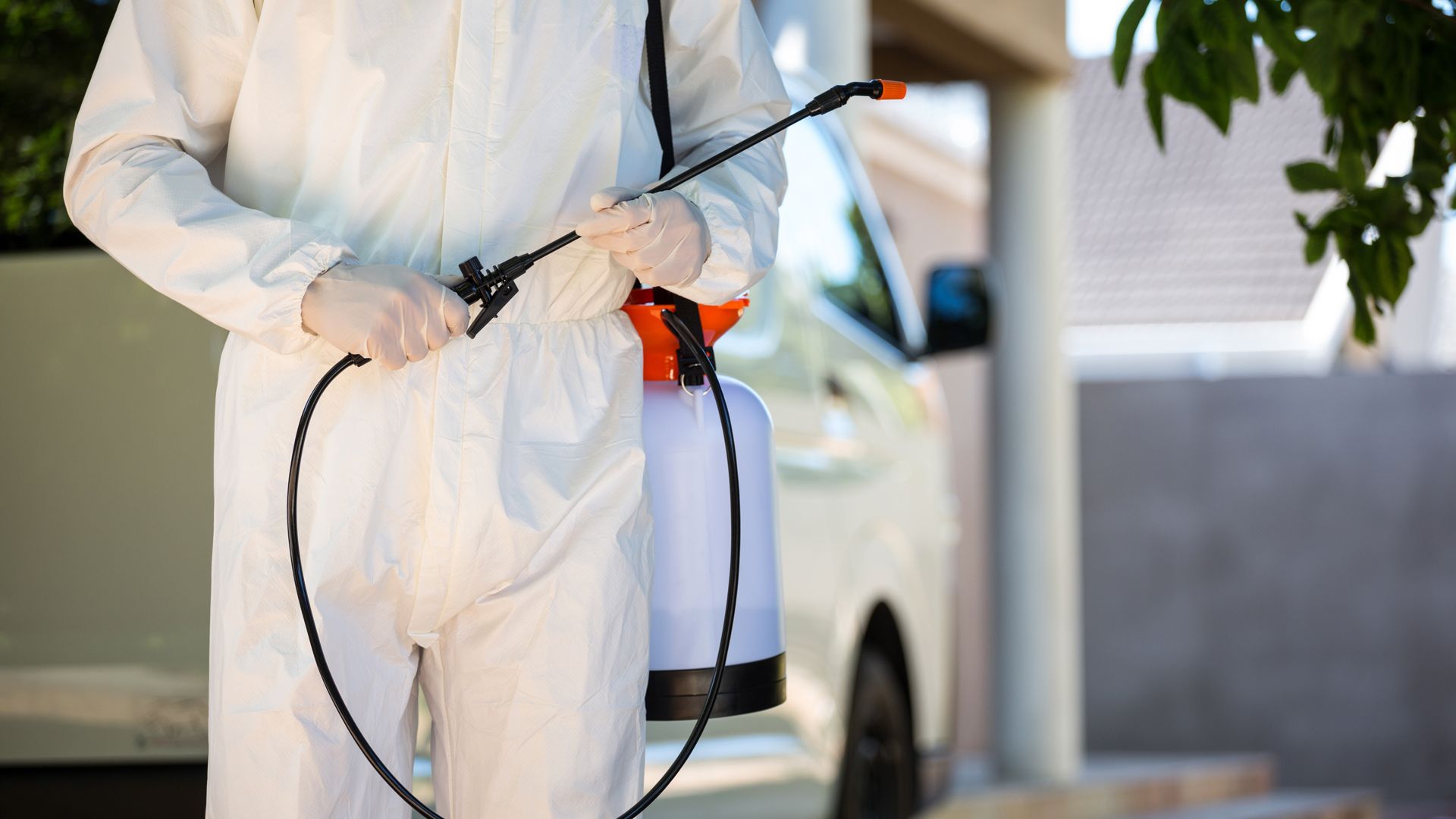
Stinging Insect Identification
What Are Stinging Insects?

Stinging insects, like most insects, are beneficial to the ecosystem, and when living outside and away from people, cause us no bother. However, when they take over our yards, they become unwanted, and in the case of stinging insects, dangerous. Stinging insects have a stinger extending for their abdomen that they mainly use as a means of defense, and some species will use it to inject venom and paralyze prey. Social stinging insects nest together in large groups and work together to maintain the nest. Solitary stinging insects create individual nests where the females lay their eggs.
Stinging insects that live and invade properties throughout Southern California include:
- Paper wasps
- Yellow jackets
- Bees
- Hornets
- Mud daubers (solitary)
Are Stinging Insects Dangerous?
Stinging insects pose two dangers to people. First, they deliver painful stings and inject potent venom that can trigger an allergic reaction. Second is the risk of infection at the bite site.
Being stung is a startling event and tends to be quite painful. After a sting occurs, the skin around the bite usually swells, becomes red, itchy, and may become warm to the touch. A severe reaction may include tightness in the throat or chest, nausea, or breathing problems, and these symptoms should immediately be treated by a medical professional.
Why Do I Have a Stinging Insect Problem?
There are a few things stinging insects look for when they decide to build a nest. They look for somewhere that provides ample shelter, is difficult for predators to reach, is easy to defend, and is near food and water sources. Unfortunately for us, more often than not, our San Diego yards offer a suitable place for most stinging insects to build their nests and forage for food.
Where Will I Find Stinging Insects?
Stinging insects build nests in many places. Some of their favorite nesting sites include trees, shrubs, ground holes, and the abandoned ground nests of small animals. They also place their nests in areas near or on our homes, where they become even more dangerous. Roof eaves, decks, window shutters, play structures, outdoor furniture, and light fixtures are other places stinging insects build nests.
If stinging insects find an opening in the exterior walls of your home, they may stay and nest behind walls, in attics, or crawlspaces.


When pests invade your home or business, you don’t need empty promises; you need proven results. At Allswell, we train our technicians to meet the highest standards set forth by the Pest Licensing Board so that you receive the service you need. We also have a 100% satisfaction guarantee, which leaves you with nothing to worry about and a pest-free home or business to enjoy.
How Do I Get Rid of Stinging Insects?
If stinging insects ever become an issue on your San Diego County, CA property, partner with a professional. At Allswell, we'll work with you to quickly remove a dangerous stinging insect nest from your yard or home. Using current technology and advanced pest control methods, we provide our customers with effective pest control solutions. Our professionals will work closely with you to control and eliminate stinging insects that invade your home or business. For more information about the stinging insect control services we provide, give us a call at Allswell today!
How Can I Prevent Stinging Insects in the Future?
Prevent problems with stinging insects by implementing proven solutions through our effective pest control services. Also, use the following tips to prevent issues with stinging insects in your San Diego yard and home:
- When spending time outside in your yard, do not wear strong smelling perfumes or lotions and wear shoes.
- After spotting a stinging insect nest in your yard, avoid the area the nest is in until a professional comes and removes it.
- Fill in bare spots in your lawn with grass and fill ground holes — both are places ground-nesting stinging insects will nest.
- Cut back overgrown shrubbery and trees from your home’s exterior walls.
- Fill in holes in your exterior walls to keep stinging insects from building a nest inside your house.
- Keep lids on trash cans, compost bins, and recycling bins to keep stinging insects from feeding in them.
- Remove woodpiles, brush piles, or construction debris from your property where stinging insects can create a nest.
Learn more about our home pest control andcommercial pest control offerings.






